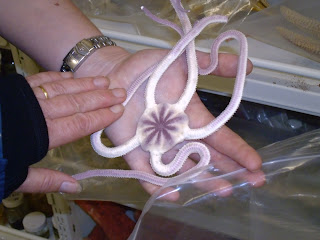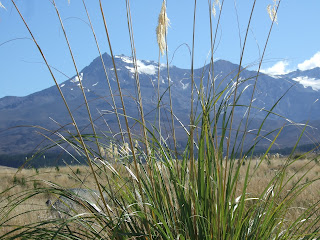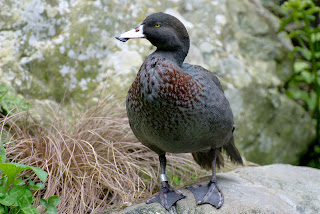Thinking about Science
Thursday, May 31, 2012
I learned interestingly that DOC have not the luxury of using traditional scientific method when faced with dealing to the dilemma of endangered species like the native bird Hihi located on small off shore islands. Can't really ethically use part of the population as a control group while using management practices such as supplementary feeding (predator proof habitat but still numbers weren't flourishing so looked at model of limitation of insufficient year round food on these scrubby islands) on the rest because the population numbers are so small, that any losses in the control group could be devastating.
Consequently DOC utilises an alternative approach called adaptive management which is like a medical model where they treat all the patients, but carefully observe and collect data from the prescribed treatments in an ethical way to improve knowledge and then allocate resources where it would make the most difference. E.g. did "on-off" experiments supplementary feeding (sugar water) the Hihi on Mokoia Island (1994) for 16 days and then unavailable for 12 days. Also feeders were placed on 1/2 the island only during the breeding season as females on nests don't move as much. Results found survival/condition of birds not limited by carbohydrates outside breeding season but survival rates were low and reproduction was limited by carbohydrate availability.
During these supplementary feeding experiments it was noticed that nest mites could build up in Hihi nests which could kill the young chicks. Experiments were conducted to let mites build up to near lethal levels and then the chicks were shifted to new nests and nest boxes.This allowed estimates of broods lost without mite control and they were quite substantial-30%! Subsequently all nests were treated for mite control.
another outcome was that experiments found high levels of fungus in nest boxes (aspergillus fumigalis) and that many dead Hihis had this fungus present.
This adaptable management approach then can minimise risks, use flexible management i.e.with the mites and fungus, using experiment results to manage the population left for a better outcome than previously. finally DOC decided with its limited resources to transfer the Hihi from Mokoia Island back to the more manageable Kapiti Island.
Monday, May 28, 2012
Monday, April 30, 2012
thinking about science
If the apex species was healthy that meant that the river ecosystem was mostly likely healthy too (e.g. the food chain interconnectedness, invertebrates like caddis and mayfly (whio’s food) would be plentiful indicating a healthy water system).What we found was a struggling whio population (severely endangered of <3,000 species whilst brown kiwi have >70,000). However Genesis Energy who run the Tongariro Power Scheme have recently poured resources ($2.5 million over 5 years) to help the whio recover. Part of this is a P.R. campaign to win public appeal which is good for business in a competitive market and part of the Resource Management Acts mitigation process. Genesis are making a difference to whio numbers primarily through stoat trapping control work along mountain river banks which is a good outcome remembering that the reduced habitat for the whio from the TPS is primarily why whio numbers were in such decline in the first place.
Friday, March 30, 2012
Hunting in the Pohangina


Went on an ecology 2nd year field trip on Saturday to find more about environmental things I could apply at school. We dug some insect pitfall traps every 25m on a transect line on a NS compass bearing into native
forest and farmland. Here's what we found a week later! I wond
er what some of these species are? Will the insects be different from the ones inside the forest to those on the edge or in the farmland?
Scenario based learning
Friday, February 17, 2012
Profile
Royal Society of N.Z. Primary Science Teacher Fellowship
Steven Poelman
Type: Primary science
School: Mount Biggs School
Programme: Going Green: Environmental Science
Host: Massey University –Ecology Department
Subject: Environmental Science
Region: Manawatu
Description:
Steven Poelman is a primary school teacher who has spent 12 years in mostly small rural schools including his present one, Mount Biggs School an environmental school near Feilding.
He is hosted by Associate Professor John Holland from the Ecology Department at Massey University with Senior Lecturer Dr Marion Mackay as a mentor. Steven is interested in finding out about things relating to restorative conservation involving native fauna and flora. He is presently finding about what different research projects ecology department members and graduate students are embarking upon and where possible he will get involved to further his understanding of science as well as develop hands on skills that will enhance both his knowledge in and out of the classroom.
So far he is appreciative of the rigorous thinking processes involved, including how searching for answers to ecological problems tends to generate more questions than solutions. He is just beginning to also obtain practical opportunities like plant identification of epiphytes within native forest remnants and is looking forward to similar (and differing ) exposures involving the interaction of animals, such as native birds and insects. Learning new things has undoubtedly been a highlight for him so far and there’s a lot more to come!








